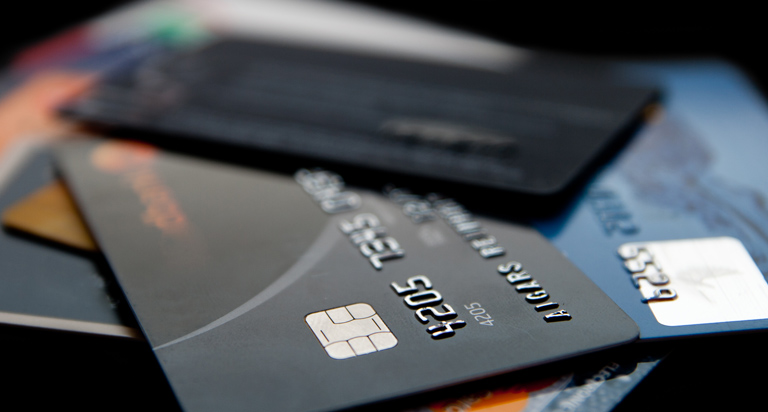How to Read A Credit Card Statement


Highlights:
- A credit card statement is a summary of your credit card activity throughout a billing cycle. Statements can help you better understand your credit card usage.
- Most credit card statements include details about your account, a summary of past activity, a record of recent transactions, the total amount you owe and more.
- Be sure to review your credit card statements carefully and hold onto them for a minimum of 60 days.
If you use a credit card, it’s important to understand how to read your statement. Credit card statements can help you spot costly purchase errors, stay ahead of surprise interest and fees, and keep an eye on your overall financial situation. Reviewing statements also helps identify unauthorized transactions.
Learn how to read your credit card statement to gain a better understanding of your financial health.
What is a credit card statement?
A credit card statement is a summary of your credit card activity throughout a billing cycle. Statements include important deadlines, past transactions, interest charges and fees, among other information.
Your bank or credit card provider issues statements at the end of each billing cycle, usually once a month. You may receive your statements as a physical bill or as a paperless, online document.
How to read your credit card statement
The information included in a credit card statement varies depending on the credit card issuer, but most statements include the following information:
- Account details. This includes basic identifying information such as your name and address. It may also include your account number and the dates of the billing cycle for the statement.
- Summary of account activity. Account summaries provide an overall snapshot of how you’ve used your credit card throughout the billing cycle. A summary may include your current balance, your balance for the previous month and the total value of payments you made during the billing cycle. It might also track your available credit, list any balance transfers or cash advances and highlight fees and interest you owe.
- Payment information. Credit card statements will generally break your payment history down in greater detail. This section may list your statement balance, which reflects how much you owed at the close of the billing cycle. Additionally, it may list the amount and due date of any required minimum payments. Some card issuers may also list your available credit on the account.
- Late and minimum payment warnings. These sections highlight how much you’ll pay in interest and fees if you don’t make your minimum payment on time. They also estimate how long it will take you to pay off your statement balance if you make only the minimum payment each month.
- Notice of changes to your interest rate and other account terms. Credit card companies use this section to notify you of any modifications to your interest rates, fees or other terms. Federal law requires credit card companies to notify you 45 days in advance of any changes to our account terms.
- Record of individual transactions. This section details all charges, payments, credits, balance transfers and cash advances throughout the billing cycle. Each charge will generally include information about the vendor, the purchase date, the transaction date and the total dollar amount. Statements may group transactions by date or by type of transaction.
- Fees and interest charges. This part tells you how much the credit card company has charged you in interest and various fees during the billing cycle.
- Interest charge calculations. Here, you’ll find a list of interest charges for each transaction, including the percentage rate and the dollar amount subject to interest charges.
What is a credit card closing date?
Your closing date is the final day of your billing cycle. The first day after your closing date, a new billing cycle begins. You’ll typically find your closing date in the summary of account activity section of your credit card statement.
However, it’s important to note that the closing date is distinct from the payment due date. Your payment due date typically falls about a month after the closing date. For example, if your closing date is February 12, you might receive a credit card statement several days later on February 15. This statement might list your payment due date as March 10.
What is a credit card statement balance?
Your statement balance shows how much you owe on the last day of the billing cycle. It includes all charges that have been posted before your account’s closing date.
Your statement balance is usually listed several times within the document, typically in the summary of account activity and payment information sections. It is sometimes referred to as a “new balance.”
What is a current balance?
Your current balance is a real-time amount that generally includes your statement balance and any additional transactions that have been posted after your credit card’s closing date.
For instance, say you make a purchase on the last day of your billing cycle, but it remains pending when the cycle ends. Once the pending transaction goes through, this amount will be reflected in your current balance, rather than in your statement balance.
Your current balance is either equal to or greater than your statement balance. If your current balance ends up being more than your statement balance, you’ll only pay interest on the amount of your statement balance, and any additional charges will be carried over into the next billing cycle.
How long should you keep credit card statements?
Whether you receive statements in the mail or go digital and opt for paperless, it’s important to review each statement carefully as soon as it arrives or is available online. But you’ll typically only need to keep paper statements for 60 days. After that period, you’re no longer allowed to dispute billing errors and it’s generally safe to dispose of your statements.
If you are disputing a billing error, however, you’ll need to keep a copy of your credit card statement for 90 days or until the dispute is resolved. If you’ve used your credit card for any tax-deductible purchases, keep your statements for three to six years in case of an IRS audit.
Your credit card statements provide a critical snapshot into your borrowing habits, so be sure you aren’t sending any statements or other important papers to the shredder without opening and carefully reviewing them first.
It’s also a good idea to regularly check your credit reports. You can receive your free Equifax® credit report by creating or signing into your myEquifax account.
Get your free credit score today!
We get it, credit scores are important. A monthly free credit score & Equifax credit report are available with Equifax Core CreditTM. No credit card required.



